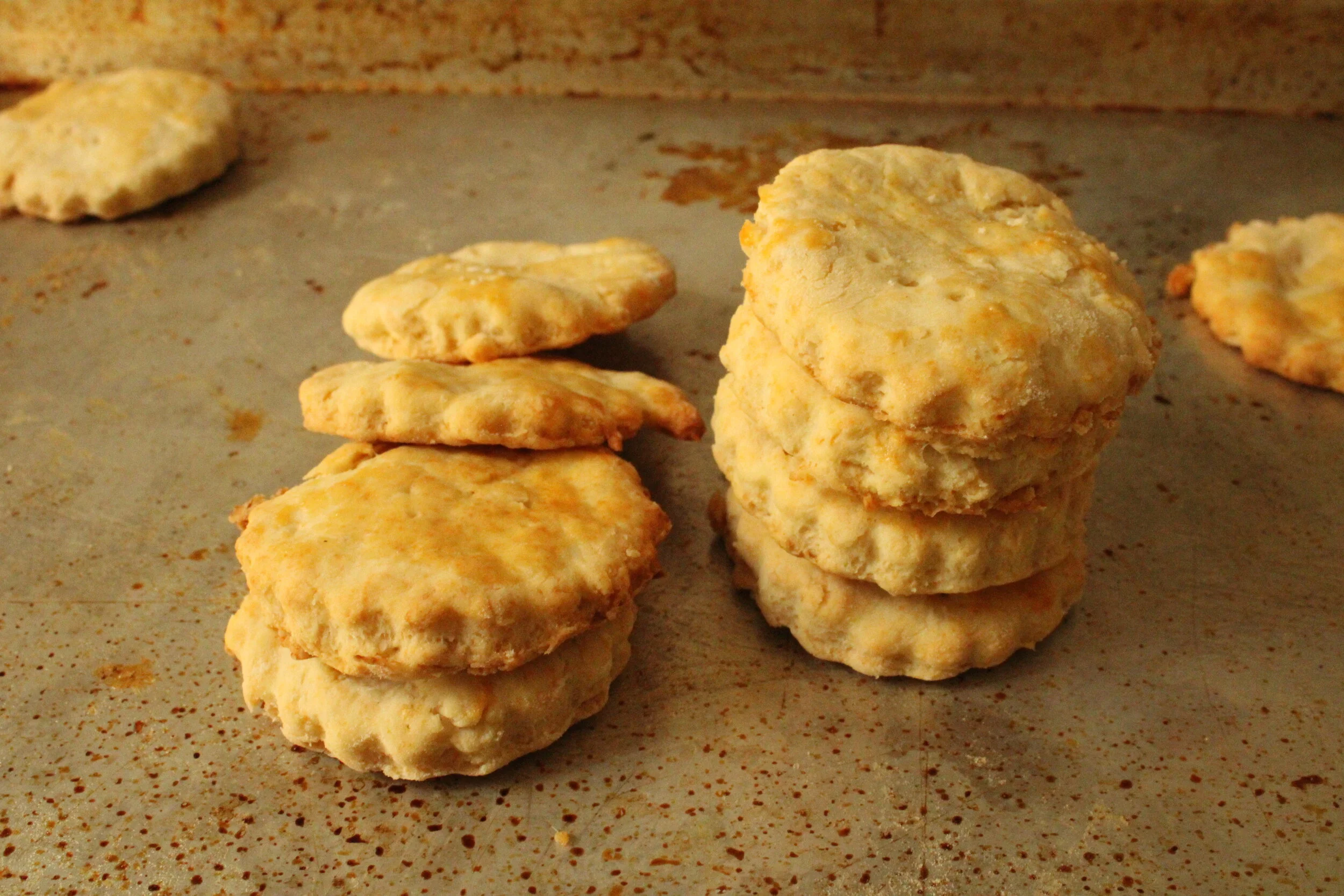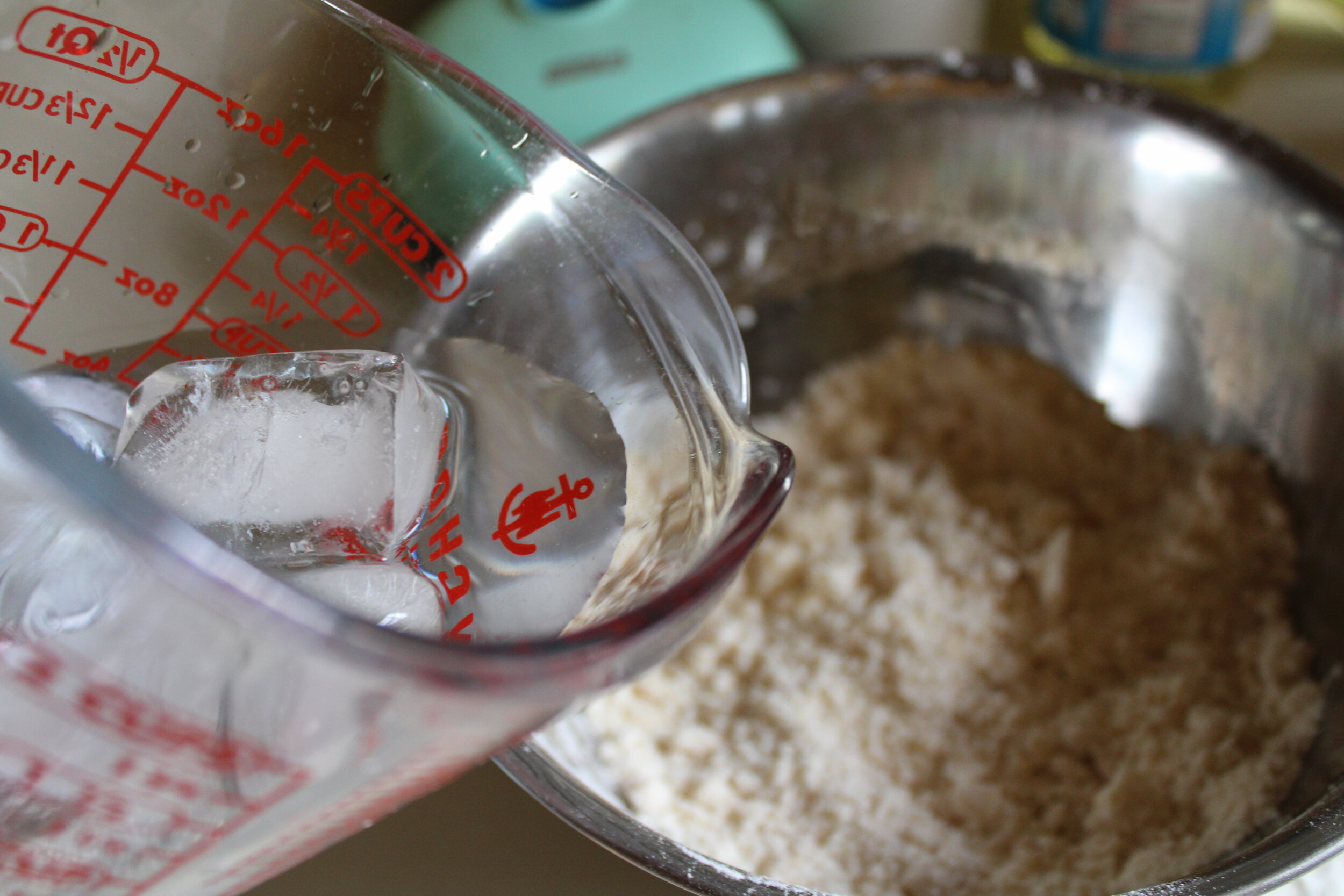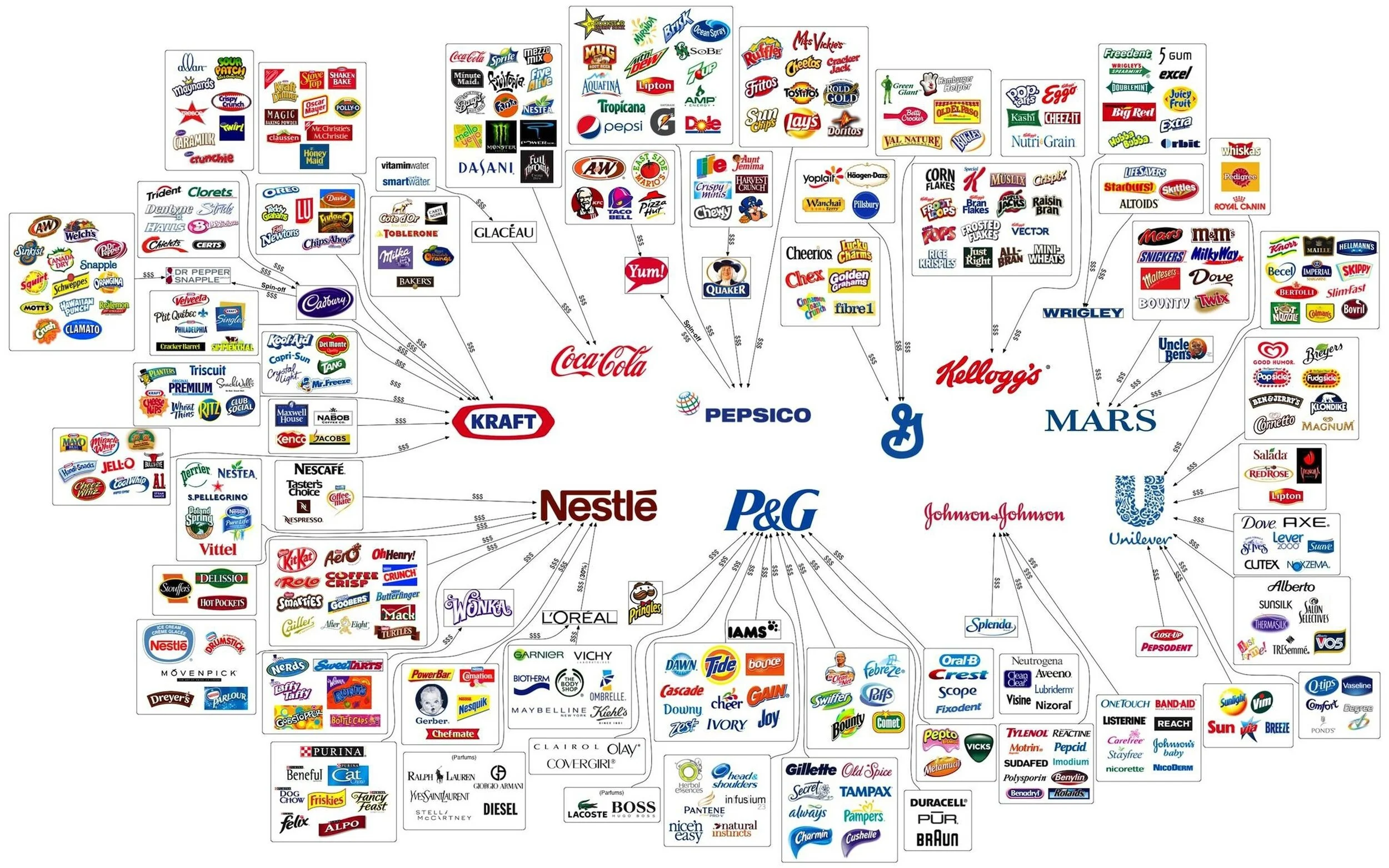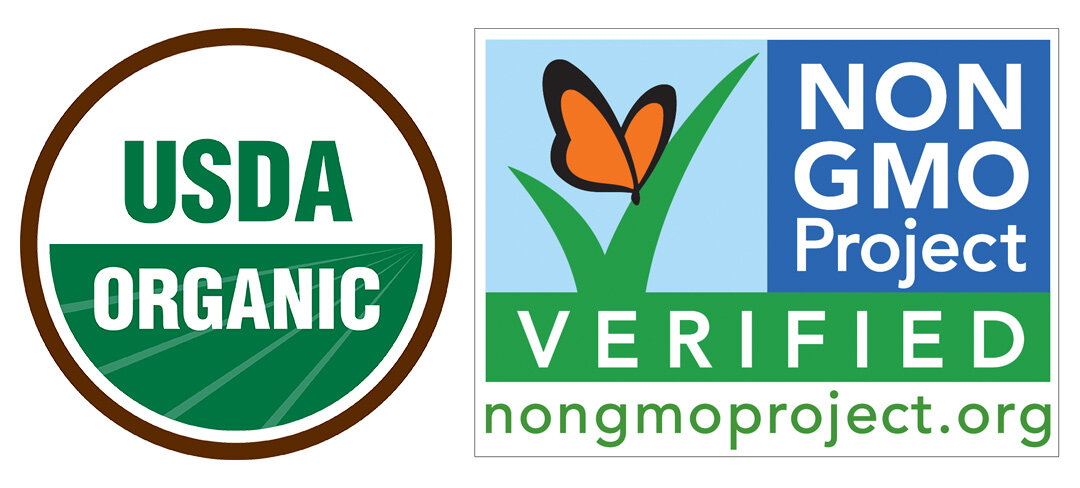Chapter 3.5: Butter Crackers

Buttery, flaky, and able to go with literally anything that’s spreadable or dippable. These are the reasons my love for butter crackers runs so deep.
While I despised PB&J sandwiches as a kid, I’d happily eat a stack of PB&J crackers. However for this gallery we’re going the savory route as they accompany my grandma’s chili receipt.
I grew up eating chili with both butter crackers and cornbread, but more often than not having them with crackers. My dad reminded me of this food tradition recently when we were talking about how my Grandma Stansberry served her signature chili with Ritz crackers.
The Ritz cracker is a Nabisco brand of butter cracker that came about in 1934 when my Grandma was 4 years old, although I’m sure butter crackers had been around long before that. By the time my dad was born, thirty years later, my grandma was serving them with their meals.
For this receipt I opted out of buying Ritz crackers because they’re owned by Mondelez International, and while they’re a company that is not owned by Bayer A.G. (which acquired the predatory seed and chemical company Monsanto) they are one that is heavily affiliated with them (more on that in Dig Deeper below).
Aside from trying to avoid harmful food companies, I wanted to play around with making crackers from scratch and found a few cracker recipes I was excited to try, including one by Todd Richards’ from his cookbook Soul. His recipes tend to be very inspired and step-heavy (e.g. making chorizo butter to go in the biscuit dough . . . which sounds ah-mazing, but . . . I just wanted to make some basic crackers) so I adapted the recipe to be a bit more simple.
However, even adapting his recipe to be simpler, I didn’t like that the crackers lacked the tender layers I was so looking forward to. So I scrapped that and worked on another recipe. After a few adjustments to that one, I got close enough to the taste and texture I’m familiar with from Ritz crackers and called it a day. This is that recipe.
The Receipt - Simple Butter Crackers (adapted from Epicurious)
Ingredients:
1 and 1/4 cup All-Purpose Flour
1 and 1/2 teaspoons Baking Powder
1 and 1/2 tablespoons Granulated Sugar
1/2 teaspoon Salt
3 tablespoons Unsalted Butter, chilled and cut into pieces
1 tablespoon Olive Oil
1/4 cup (2 ounces) ice water, divided
1 egg
1 tablespoon milk
2 tablespoons unsalted butter, melted
1/4 teaspoon salt
Directions:
Heat your oven to 400°F, and prepare a baking sheet by lining it with parchment or simply greasing it with a few drops of oil.
Combine the dry ingredients in a large bowl, then add in chilled butter and incorporate with a fork to create a coarse mixture. Then stream in the oil and water, 1 tablespoon at a time, being careful to notice when the dough is starting to form large clumps and become moistened. Alternatively you can do this in a food processor running.
When the dough begins to take shape, turn it out onto a well-floured surface and squeeze it together to form a ball. Give one to two kneads, then sprinkle some flour on top of the dough and roll it out to about 1/4 inch thickness.
Before cutting the crackers, use a fork to prick the dough all over. Then with a small cookie cutter (I like fluted ones like this), cut out the crackers and carefully place them on the prepared baking sheets.
In a small bowl, whisk together the egg and milk to create a wash, and use a pastry brush to lightly coat the tops of the crackers with it.
Depending on the size of your crackers they’ll only need to bake for about 5-10 minutes, or until they begin to brown.
While the crackers are baking, in a small bowl combine melted butter and salt. You can use this to brush over the crackers while they’re still warm and just before serving. Enjoy with your favorite soup or spread them with jam!
Someone get this girl a pastry brush . . .
Dig Deeper
Have yet to find the source of who created this image, but if you know feel free to email me.
So this image has made the internet rounds for quite a few years, with the intention of illustrating the monolopy-esque nature of the large pharmaceutical company Bayer A.G. However, the image has often been inaccurately interpreted as Bayer owning all of these companies. While Bayer owning these companies is not true, it is true that Bayer is heavily affiliated with these companies in ways that appear to function as if Bayer owns them.
But what is Bayer A.G.?
Bayer A.G. is a German pharmaceutical company that has been producing chemicals for the past 150+ years. Some of their most well known products have included heroin (when that was legal), aspirin, and most recently products containing glyphosate such as Round-Up.
So, it sounds like Bayer just produces chemicals that people would either never eat or only ingest if they were in pain, what’s that have to do with Ritz crackers?
Ritz crackers and many of the products listed in the above image contain chemicals produced by Bayer either directly in their ingredient list, or are products that are grown on large farms that use chemical herbicides (weed killers) like Round-Up so heavily on the plants (e.g. wheat, corn, sugar, etc.) that traces of the chemicals are still found in the final food products. Therefore, people who eat these products are ingesting these chemicals.
Studies for the levels of Round-Up/Glyphosate found in product lines of Betty Crocker, Nabisco, and can be found here and here.
What’s so bad about glyphosate?
Numerous studies and publications (see below) have linked the chemical to causing long-term damage to humans, namely that it’s possibly carcinogenic (cancer-causing) and is linked to infertility. These are studies that have been conducted primarily on mice (unfortunately), as most chemical studies are, so make of that what you will.
Well if glyphosate is found in or on these food products they’re probably at levels that are safe enough for humans to consume right? We consume lots of chemicals that are safe at some levels, and the government would never allow a food company to feed us something with high-levels of cancer causing products, right?
Uh. . . no, in fact, before Monsanto was acquired by Bayer in 2019, it was in the middle of a lawsuit for allegations that the glyphosate in Round-Up caused a groundskeeper named Dewayne Johnson to develop cancer. Monsanto lost that lawsuit, and Bayer had to pay $78 million dollars to Johnson. Despite this lawsuit, and other countries banning the use of glyphosate, glyphosate products like Round-Up are still allowed to be used in farms, gardens, and food products in the U.S.
As far as safe levels in food products, there isn’t any regulation on what levels of glyphosate would be safe to have in food in the U.S. Instead any movement towards establishing that sort of regulation (e.g. studies to validate the need for safety standards) have often been derailed by Monsanto who, before it was acquired by Bayer, had a history of falsifying information in research studies, or suing for laws that would ban its use.
So, if glyphosate is so widely used, how do you know it’s not in the ingredients you used to make these crackers?
I don’t.
I don’t really know for sure. I can only trust the labels on the products I use. I try to buy non-Genetically Modified Organism (GMO) flour and sugar most of the time. However, even when I do, a GMO label for baking products only implies that glyphosate wasn’t used in it’s growth and processing, it doesn’t explicitly say whether or not it’s in there or not.
Additionally, the Non-GMO Project and USDA, who are in charge of providing standards for non-GMO and organic labels, often allow for the use of many chemicals in food. Some of those chemicals could come from predatory companies like Bayer, or be just as harmful if not more so than glyphosate. There currently aren’t enough studies on the impacts most of these non-GMO chemicals have on humans due to companies like Bayer often lobbying against them being studied without bias.
So like, how can you avoid eating glyphosate and GMO products then?
There are organizations that create non-GMO labels that food companies can apply for, but the best way to avoid chemicals and GMO foods is to purchase from local farmers and food producers that offer radical transparency about their products. So developing trusting relationships with local food producers if you’re able to is what’s key here. Other than that, growing your own food and not using any chemical pesticides (which encompasses herbicides, fungicides, and insecticides) is the only 100% way to avoid harmful chemicals like glyphosate.
Resources:
U.S. Agency for Toxic Substances and Disease Registry Toxicological Profile for Glyphosate
Glyphosate: Unsafe on Any Plate HERE
Glyphosate Fact Sheet: Cancer and Other Health Concerns HERE
Understanding the USDA Organic Label HERE
Non-GMO Project Standards HERE
International Agency for Research on Cancer (IARC) IARC Monographs Volume 112: evaluation of five organophosphate insecticides and herbicides
















